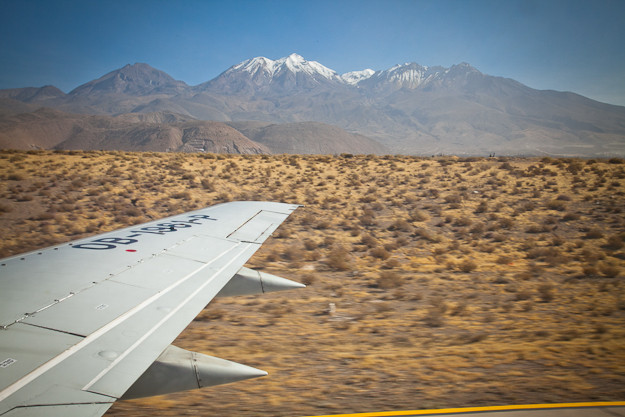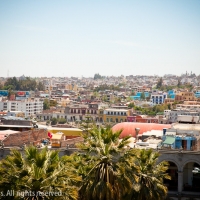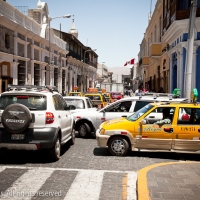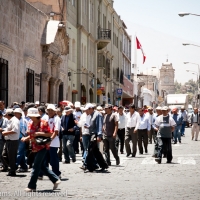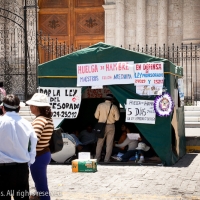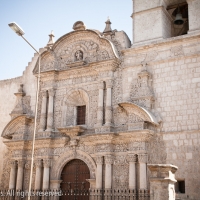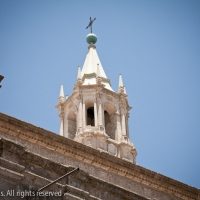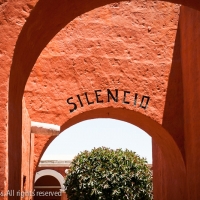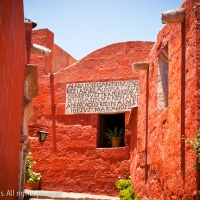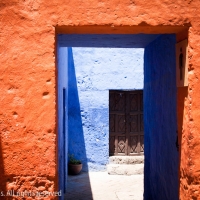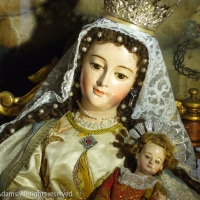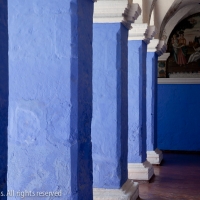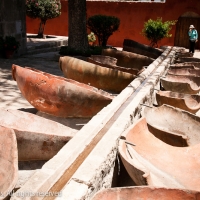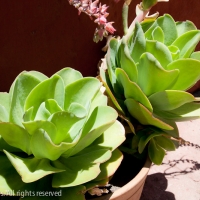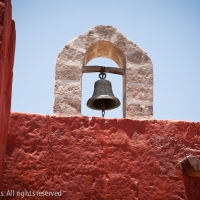Our 6:00 am flight from Lima got us into Arequipa early in the morning. Looking out of the plane window during the landing, I was struck by how much the area near the airport reminded me of Albuquerque.
Arequipa is Peru’s second-largest city and is known as “La Ciudad Blanca” (the White City) because so many of the buildings are constructed from a local white volcanic rock. Snow-capped mountains and the famous El Misti volcano are visible from many points within the city.
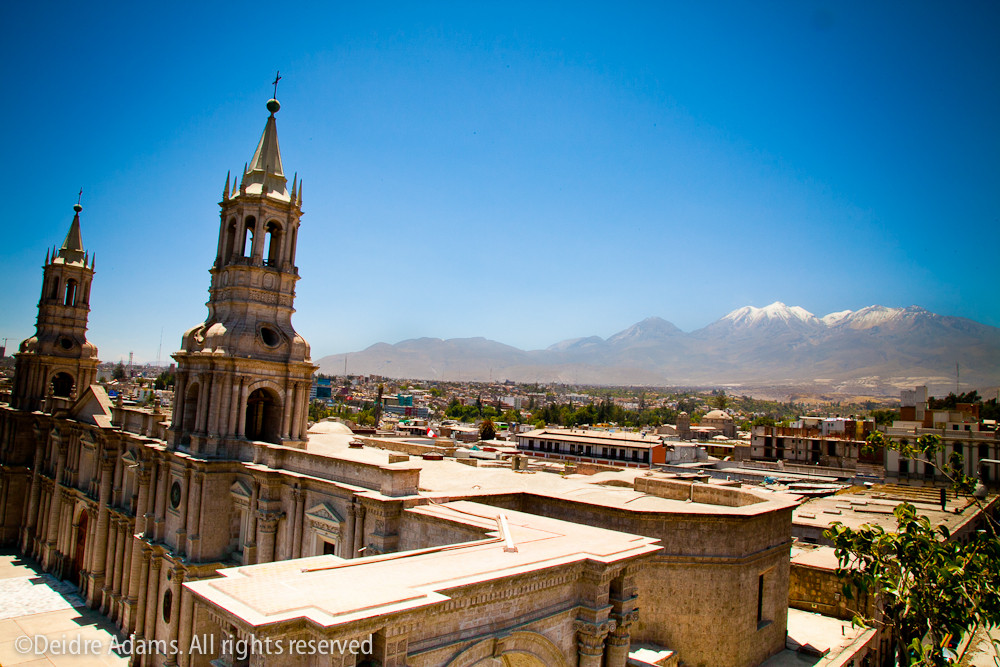
View from the 2nd floor balcony of a restaurant on the Plaza de Armas.
When we arrived in Peru, we were told that strikes by both doctors and teachers were going on. The doctors’ strike ended a few days after our arrival, but as far as I know, the teachers’ strike is still going on, and there was also a transportation strike in Lima this week. We witnessed a small peaceful demonstration and march in Arequipa, but our guide didn’t seem to know any details (or didn’t want to discuss it).
We saw two of the most popular attractions in Arequipa. The first was the Santa Catalina Monastery, a huge complex almost like a city within a city built in 1580. The architecture is quite interesting, and the vivid blue and red walls are a visual feast. A guided tour of the grounds provides a wealth of historical details, including the fact that most of the nuns came from wealthy families and had to pay a dowry of 2500 silver coins upon admission. But the most surprising thing to me was to learn that some of these nuns had slaves up until about 1871, when they were set free during a period of reform. There are still about 20 nuns living at Santa Catalina, only a small fraction of the number living there during its peak.
Also of interest is the Juanita mummy at the Catholic University’s Museum of Andean Sanctuaries (Museo Santuarios Andinos). “Juanita” is the name given to the girl whose frozen body was found in 1995 on a high mountain top after the eruption of a nearby volcano caused ice around her tomb to melt and her body fell out into the open. She was an Inca “princess” who at age 12-14 was sacrificed sometime around 1440-1450 as an offering to the gods. Although it seems they have no way of knowing this for sure, the film presented at the beginning of the tour suggests that this young girl would have have felt it a great honor to be chosen for the sacrifice. PBS has some interesting details on the topic of mummies and sacrifice.


